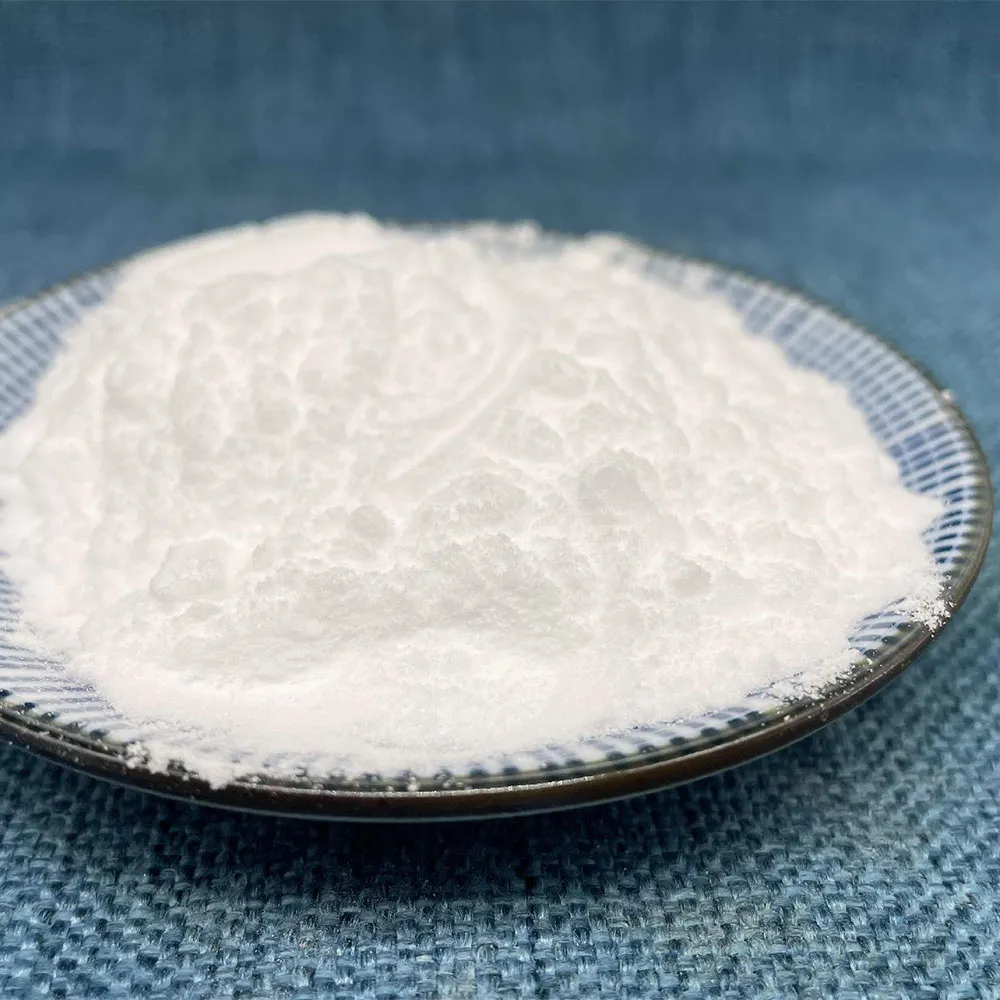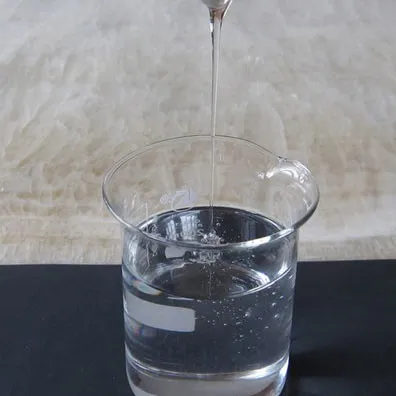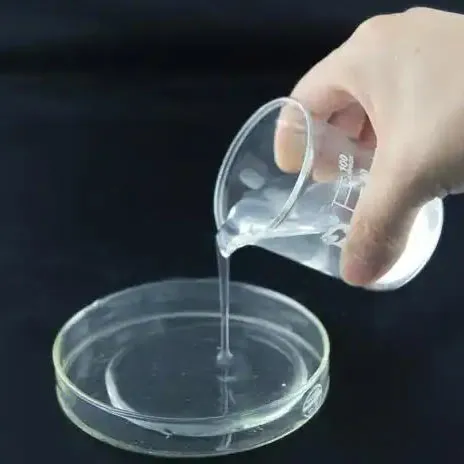
Premium Ethyl Cellulose | Binder for Pharma & Coatings
The Evolving Landscape of Ethyl Cellulose: Market Trends & Future Outlook
The global polymer market is in a constant state of evolution, and within this dynamic sphere, Ethyl Cellulose (EC) has carved out a significant niche as a versatile, high-performance cellulose ether. Its unique properties, primarily its insolubility in water and solubility in a wide range of organic solvents, make it an indispensable material in several high-value industries. Current market analysis indicates a steady compound annual growth rate (CAGR) of approximately 4.5-5.5% for the **Ethyl Cellulose** market, driven primarily by advancements in the pharmaceutical and specialty coatings sectors.
A key trend is the increasing demand for advanced drug delivery systems. The pharmaceutical industry is leaning heavily towards controlled-release and taste-masking formulations to improve patient compliance and therapeutic efficacy. Ethyl Cellulose is a cornerstone material for these applications, serving as a robust, pH-insensitive barrier for drug coatings. As reported by market research firm Grand View Research, the oral solid dosage forms market continues to dominate, creating a sustained demand for high-quality excipients like EC.
Furthermore, the push for eco-friendly and high-durability materials in the coatings and inks industry is another significant driver. Ethyl Cellulose** acts as an excellent film former, binder, and rheology modifier, contributing to the formulation of resilient, long-lasting coatings for electronics, specialty papers, and flexible packaging. The shift towards non-toxic, biocompatible materials also bolsters its use in food-contact applications and personal care products.

Tangzhi Chem's premium-grade Ethyl Cellulose, characterized by its fine white powder form and consistent quality.
Deep Dive into Technical Specifications: Understanding Ethyl Cellulose Parameters
To fully appreciate the capabilities of Ethyl Cellulose, it's crucial to understand its key technical parameters. These specifications determine the polymer's behavior and suitability for specific applications. At Tangzhi Chem, we offer a range of grades, each meticulously engineered to meet stringent industry standards.
Key Technical Parameters Explained:
- Ethoxy Content (%): This is the most critical parameter, defining the degree of substitution (DS) of ethoxyl groups onto the cellulose backbone. Typically ranging from 44% to 50%, a higher ethoxy content results in better solubility in organic solvents and increased thermoplasticity. Our standard grades, compliant with USP/EP standards, are typically in the 48.0–49.5% range.
- Viscosity (mPa.s): Measured in a standardized solvent solution (e.g., 5% solution in toluene/ethanol 80:20), viscosity indicates the polymer's molecular weight. We offer a wide spectrum from low viscosity (7 mPa.s) for spray coatings to high viscosity (100 mPa.s) for robust binding applications.
- Glass Transition Temperature (Tg): This is the temperature at which EC transitions from a rigid, glassy state to a more pliable, rubbery state. With a Tg of around 130°C, **Ethyl Cellulose** provides excellent thermal stability for processes like tablet curing and high-temperature ink drying.
- Purity & Compliance: Our products are manufactured to exceed standards set by the FDA (21 CFR 172.868), USP (United States Pharmacopeia), and EP (European Pharmacopoeia), ensuring minimal impurities and suitability for food and pharmaceutical use.
| Parameter | Tangzhi Standard Grade (e.g., T-10) | Tangzhi Premium Grade (e.g., T-100) | Industry Standard (USP/EP) | Significance in Application |
|---|---|---|---|---|
| Appearance | White to off-white, free-flowing powder | Fine, pure white, free-flowing powder | White or slightly yellowish, odorless powder | Ensures formulation consistency and visual appeal of the final product. |
| Ethoxy Content (%) | 48.0 - 49.5 | 48.5 - 49.5 (Tightly Controlled) | 48.0 - 49.5 | Determines solubility, film strength, and thermoplastic properties. |
| Viscosity (5%, 80:20 Toluene:Ethanol) | 9 - 11 mPa.s | 90 - 110 mPa.s | Varies by grade specification | Impacts film thickness, binder strength, and solution rheology. |
| Loss on Drying (%) | ≤ 2.0% | ≤ 1.5% | ≤ 3.0% | Low moisture content prevents clumping and ensures accurate dosing. |
| Residue on Ignition (%) | ≤ 0.2% | ≤ 0.1% | ≤ 0.4% | Indicates the level of inorganic impurities, crucial for pharma and food grades. |
| Lead (Pb) | ≤ 2 ppm | ≤ 1 ppm | ≤ 2 ppm | Guarantees safety and compliance with global food and drug regulations. |
The Manufacturing Journey of Ethyl Cellulose: From Raw Material to High-Tech Polymer
The production of high-quality Ethyl Cellulose is a sophisticated chemical process that transforms natural cellulose into a highly functional derivative. At Tangzhi Chem, we adhere to rigorous process controls and quality checks at every stage, compliant with ISO 9001:2015 standards, to guarantee a product of exceptional consistency and purity.
Our State-of-the-Art Manufacturing Process:
Alkalization
High-purity wood pulp or cotton linter is treated with a concentrated sodium hydroxide solution to produce alkali cellulose.Etherification
The alkali cellulose reacts with ethyl chloride under high temperature and pressure in a specialized reactor. This is the core step where ethoxy groups are attached to the cellulose backbone.Purification
The crude **Ethyl Cellulose** is thoroughly washed with hot water to remove residual salts and byproducts, ensuring high purity.Drying & Milling
The purified product is dried in a controlled environment and then milled to a specific particle size distribution to ensure excellent flowability and dissolution characteristics.Material, Standards, and Performance Advantages:
- Raw Material: We exclusively use sustainably sourced, high-alpha cellulose wood pulp, ensuring a pure and reliable starting material.
- Manufacturing Technology: Our process involves precision-controlled reactors and a closed-loop system to ensure batch-to-batch consistency and environmental responsibility. Post-production, CNC-guided milling equipment allows for custom particle size engineering.
- Testing Standards: Every batch undergoes rigorous testing against international standards, including ASTM methods for viscosity and purity analysis, alongside compliance with USP, EP, and FDA guidelines.
- Product Lifespan: With proper storage in a cool, dry place, our Ethyl Cellulose maintains its specified properties for a minimum of 24 months.
- Key Advantage (Energy Saving): In tablet coating, the organic solvent systems used with EC evaporate much faster than aqueous systems, leading to shorter processing times and significant energy savings in drying ovens.
- Key Advantage (Corrosion Protection): When used in specialty coatings for metal, the excellent film-forming and low water vapor permeability of **Ethyl Cellulose** create a formidable barrier against moisture and corrosive agents, extending the life of the substrate.

Our ISO-certified facility ensures every batch of Ethyl Cellulose meets the highest quality and safety standards.
Diverse Applications: Where Ethyl Cellulose Delivers Unmatched Value
The unique physicochemical properties of Ethyl Cellulose make it a versatile problem-solver across numerous industries. Its ability to form clear, tough, flexible films, provide controlled release, and act as a binder is unparalleled.
Pharmaceutical Industry
- Controlled-Release Coatings: The primary application. EC forms a water-insoluble barrier over tablets and pellets, allowing for drug release through diffusion. The release rate can be precisely controlled by adjusting the film thickness and incorporating pore-formers.
- Taste Masking: Effectively masks the bitter taste of active pharmaceutical ingredients (APIs), improving patient palatability, especially in pediatric formulations.
- Microencapsulation: Used to encapsulate APIs, protecting them from moisture, oxidation, and light, thereby enhancing stability.
- Tablet Binder: In wet granulation and direct compression, it provides excellent hardness and low friability to tablets.
Food & Nutrition
- Flavor Encapsulation: Protects volatile flavors during processing and storage, ensuring a burst of flavor upon consumption. Compliant with FDA 21 CFR 172.868.
- Vitamin & Mineral Coatings: Provides a barrier against moisture and oxidation for sensitive nutrients in fortified foods and supplements.
- Binder in Food Products: Acts as a non-caloric binder in certain specialized food applications.
Coatings, Inks & Adhesives
- Specialty Inks: Used in gravure and flexographic printing inks, providing excellent adhesion, flexibility, and fast solvent release for high-speed printing on non-porous substrates like plastic films.
- Protective Lacquers: Forms tough, durable coatings for plastics, wood, and metal, offering scratch resistance and protection.
- Hot-Melt Adhesives: Acts as a rheology modifier and provides strength and flexibility in adhesive formulations.
Other Niche Applications
- Electronics: Used as a binder in the manufacturing of ceramic capacitors and other electronic components.
- Cosmetics: Acts as a film former in nail polishes and other personal care products.
- Specialty Papers: Provides gloss, water resistance, and durability to high-end paper coatings.

Precise formulation development using Ethyl Cellulose for advanced drug delivery systems.
The Tangzhi Advantage: A Clear Comparison
Choosing the right supplier for a critical raw material like Ethyl Cellulose can significantly impact your final product's quality and performance. At Tangzhi Chem, we pride ourselves on delivering a superior product backed by unparalleled service.
Performance Comparison: Tangzhi Premium EC vs. Generic Competitor
Our commitment to using premium raw materials and advanced process controls translates into tangible benefits for our clients, including higher yields, fewer batch rejections, and a more reliable final product.
Customized Solutions: Tailoring Ethyl Cellulose to Your Exact Needs
We understand that one size does not fit all. Standard grades of Ethyl Cellulose serve a wide range of applications, but for cutting-edge projects, a custom-formulated polymer can be the key to success. Tangzhi Chem's R&D team works closely with clients to develop bespoke solutions.
Our Customization Capabilities:
- Custom Viscosity: We can target specific viscosity ranges outside of our standard grades to precisely control the rheology of your formulation.
- Particle Size Engineering: Through advanced milling and classification, we can provide specific particle size distributions (e.g., finer powder for faster dissolution or granular for dust-free handling).
- Varied Ethoxy Content: For unique solubility or thermal property requirements, we can adjust the degree of substitution within a specified range.
- Blended Formulations: We can create pre-blended products containing **Ethyl Cellulose** and other excipients (like plasticizers or pore-formers) to simplify your manufacturing process.
Application in Action: Customer Success Stories (Experience & Trustworthiness)
Theory and specifications are important, but real-world performance is the ultimate test. Here are examples of how our Ethyl Cellulose has empowered our clients.
Case Study 1: Achieving Zero-Order Release for a Hypertension Drug
"A leading European pharmaceutical company was struggling to achieve a consistent, zero-order release profile for a new extended-release hypertension medication. Their existing polymer supplier provided material with significant batch-to-batch viscosity variations, leading to unpredictable dissolution rates. By switching to Tangzhi's T-100 high-viscosity Ethyl Cellulose, known for its tight viscosity control (±5% of target), they were able to stabilize their coating process. Our technical team also advised on the optimal ratio of EC to HPMC (a pore-former) in the coating. The result was a successful validation of a formulation that met the stringent zero-order release profile, leading to a successful drug launch."
Case Study 2: Enhancing Durability of Flexible Packaging Inks
"A major ink manufacturer for the food packaging industry needed to improve the scuff resistance and flexibility of their gravure inks printed on polypropylene films. Their current binder system was brittle, leading to cracking upon folding. We provided them with our T-20 mid-viscosity Ethyl Cellulose grade. Its excellent film-forming properties and inherent flexibility created a non-brittle, highly adhesive ink. This not only solved the cracking issue but also improved print speeds due to faster solvent release, resulting in a 15% increase in production efficiency."

Perfectly uniform tablet coatings, a hallmark of high-quality Ethyl Cellulose, ensure predictable drug release and stability.
Your Questions Answered: Professional FAQ on Ethyl Cellulose
1. What exactly is the 'Degree of Substitution' (DS) and why is it so important for Ethyl Cellulose?
The Degree of Substitution refers to the average number of hydroxyl groups on each anhydroglucose unit of the cellulose backbone that have been replaced by ethyl ether groups. The maximum possible DS is 3.0. For Ethyl Cellulose, the DS is directly related to the ethoxy content. It is critically important because it dictates the polymer's core properties: a DS in the range of 2.4-2.5 (approx. 48-49.5% ethoxy) provides the ideal balance of organosolubility and thermoplasticity required for most pharmaceutical and industrial applications.
2. How does viscosity grade affect the performance of an Ethyl Cellulose coating?
Viscosity is a proxy for the molecular weight of the polymer. A higher viscosity grade (higher molecular weight) will produce a stronger, tougher, and more durable film at the same concentration. However, it will also result in a more viscous solution, which may require more solvent and be harder to spray. A lower viscosity grade is easier to handle and allows for higher solids content in a sprayable solution, but the resulting film may be less robust. The choice depends on the desired balance between film strength and processing ease.
3. Is Ethyl Cellulose soluble in water?
No, a key characteristic of Ethyl Cellulose is its insolubility in water, glycerol, and propylene glycol. This property is what makes it an excellent moisture barrier and the basis for controlled-release coatings in pharmaceuticals. It is, however, soluble in a wide range of organic solvents, including ethanol, methanol, toluene, and various esters and ketones, which makes it easy to incorporate into solvent-based systems.
4. What plasticizers are compatible with Ethyl Cellulose films?
Ethyl Cellulose films can be somewhat brittle on their own and almost always require a plasticizer to improve flexibility and reduce the glass transition temperature (Tg). Common and effective plasticizers include Dibutyl Sebacate (DBS), Diethyl Phthalate (DEP), Triethyl Citrate (TEC), and plasticizing oils like castor oil. The choice and concentration of the plasticizer (typically 10-30% by weight of the EC) are critical for achieving the desired film properties, such as permeability and elasticity.
5. What regulatory standards does Tangzhi's Ethyl Cellulose meet for pharmaceutical use?
Our pharmaceutical grades of Ethyl Cellulose are manufactured in strict compliance with the Good Manufacturing Practices (GMP). They meet or exceed the monograph requirements of the United States Pharmacopeia (USP), European Pharmacopoeia (EP), and Japanese Pharmacopoeia (JP). Furthermore, the product is listed on the FDA's Inactive Ingredient Database and is suitable for use in regulated drug products.
6. What is the typical shelf life and what are the recommended storage conditions?
The guaranteed shelf life of our Ethyl Cellulose is 24 months from the date of manufacture when stored in its original, unopened packaging. To ensure stability, it should be stored in a dry, cool place, away from direct sunlight and sources of heat. It is a stable material but can be combustible, so it should be kept away from open flames or ignition sources.
7. What are your typical lead times and quality assurance commitments?
Standard grade orders typically have a lead time of 2-3 weeks, while custom orders may require 4-6 weeks. We provide a Certificate of Analysis (CoA) with every shipment, detailing the specific test results for that batch against the agreed-upon specifications. Our quality promise includes guaranteed batch-to-batch consistency and full traceability from raw material to final product. In the unlikely event of a quality issue, our customer support team is dedicated to providing a swift resolution, including replacement or credit.
Partner with the Experts in Ethyl Cellulose
Elevate your products with the quality, consistency, and innovation of Tangzhi Chem's Ethyl Cellulose. From standard grades to fully customized solutions, our team is ready to support your next project.
Request a Sample or Quote TodayAuthoritative References & Further Reading
- Scientific Publication: "A review of ethylcellulose (EC) as a polymer for drug delivery." Journal of Controlled Release. This comprehensive review discusses the physicochemical properties, formulation strategies, and diverse applications of EC in controlled drug delivery systems. Read more on ScienceDirect.
- Regulatory Standard: "Food and Drug Administration, CFR - Code of Federal Regulations Title 21, Part 172.868, Ethyl cellulose." This document outlines the FDA's official stance on the use of Ethyl Cellulose as a direct food additive. View FDA Regulation.
- Industry Forum Discussion: "Best Practices for Ethylcellulose Aqueous Dispersion Coating." An article in Pharmaceutical Technology that delves into the practical challenges and solutions for working with EC in aqueous coating systems, a growing area of interest. Explore at Pharmaceutical Technology.
-
Reliable Powdered Cellulose Supplier: Quality, Sustainability & InnovationNewsNov.24,2025
-
Find Trusted Microfibrillated Cellulose Suppliers for Sustainable Industrial SolutionsNewsNov.24,2025
-
Leading Methocel Suppliers: Quality, Innovation & Sustainability in Methylcellulose SupplyNewsNov.23,2025
-
Reliable Hydroxyethylcellulose Suppliers for Industry & Sustainability | Tangzhi HPMCNewsNov.23,2025
-
Top Ethyl Cellulose Supplier – Quality, Sustainability, and Industrial SupportNewsNov.23,2025
-
Trusted CMC Powder Suppliers for Food, Pharma & Industrial Use | Tangzhi HPMCNewsNov.22,2025





















